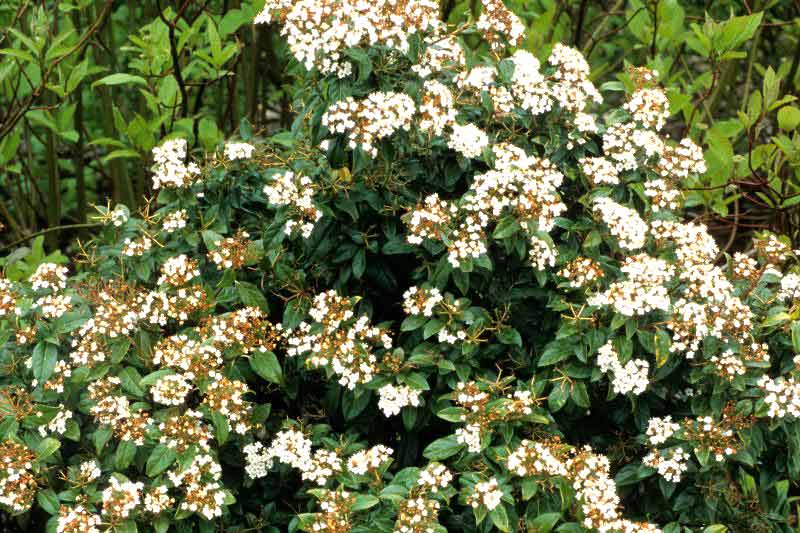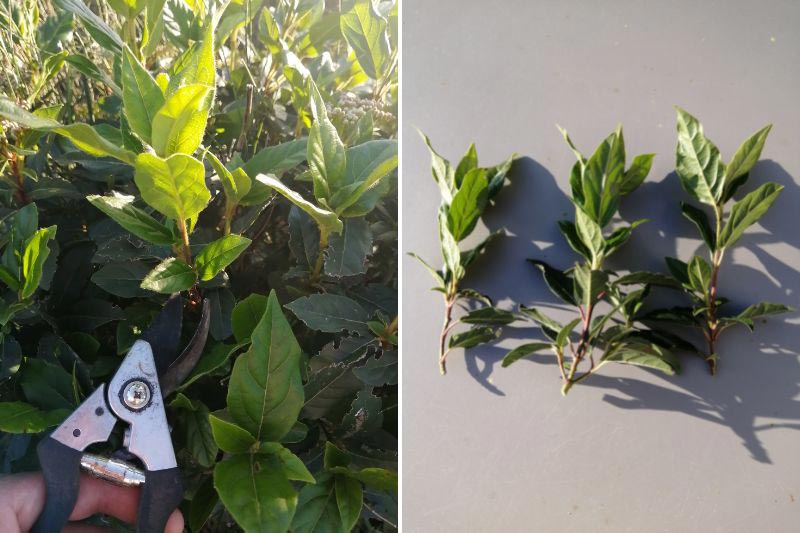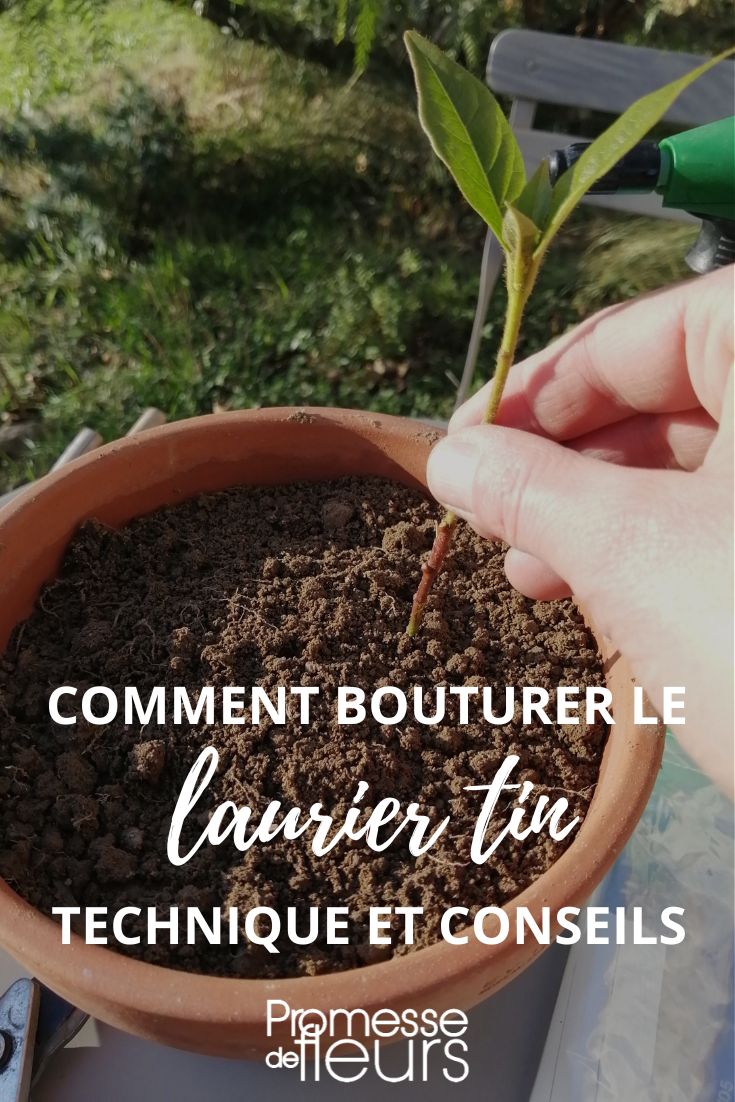Beautiful bush 2 to 3 m tall, prized for its winter flowering, evergreen foliage and great adaptability to most soils and positions, Laurustinus or Viburnum tinus can be multiplied by propagation by cuttings; this produces perfect clones, useful for creating hedges or filling borders at low cost. Discover in this tutorial the technique to propagate Laurustinus easily.

When to propagate Laurustinus?
Take cuttings of Viburnum tinus at the end of summer (August–September) from non-flowering, semi-ripe shoots (not fully woody) or in autumn–winter from ripened shoots.
How to proceed?
- Using pruning shears, take semi-ripe shoots about 15 centimetres long

- Remove leaves along the stem, leaving only one or two pairs of leaves at the tip
- You can dip the base of the shoots in a powder or solution of rooting activator, which will encourage root development and increase the chances of your cuttings taking
- Fill your pot with potting compost or a soil–sand mix and press lightly
- Insert the cuttings into the substrate, spacing them about 10 cm apart and firming the substrate around each cutting to keep it upright

- Mist with a spray bottle and place cuttings in light, avoiding direct sun. Summer heat can dry out cuttings if taking them in August–September: we therefore recommend propagating under cover, i.e. placing a small plastic bag held up with stakes, a cloche or a plastic bottle with the base cut off over your cuttings

- Water regularly, but not excessively, so the potting compost does not dry out. Every 3 to 4 days, lift the plastic or cloche for half an hour to renew the air
After 2 to 3 months, roots of your cuttings will have developed sufficiently. You can remove the cloche and repot your young plants individually into larger pots, taking care not to damage the roots. Protect young shoots over winter by storing them in a bright, unheated room or in a cold greenhouse. Greatly reduce watering, especially during frosts.
Next spring, you can plant small bushes directly in ground. They prefer a light, well‑drained soil, in full sun or partial shade. Undemanding, you can simply add a handful of well‑rotted compost at the base of your Laurustinus when planting.
Water during heatwaves and severe drought for first two years after planting; once well established, Laurustinus will tolerate summer drought without problems.
Equipment needed to propagate Laurustinus
- well‑sharpened pruning shears
- biodegradable buckets or terracotta or plastic pots deep enough
- a rooting activator (facultative)
- special potting compost for cuttings or good garden soil mixed half and half with coarse sand to obtain a draining substrate
- a small hand trowel
- a plastic bag and stakes, a cloche, a plastic bottle or a mini‑greenhouse to cover the cuttings
- a spray bottle
































Comments